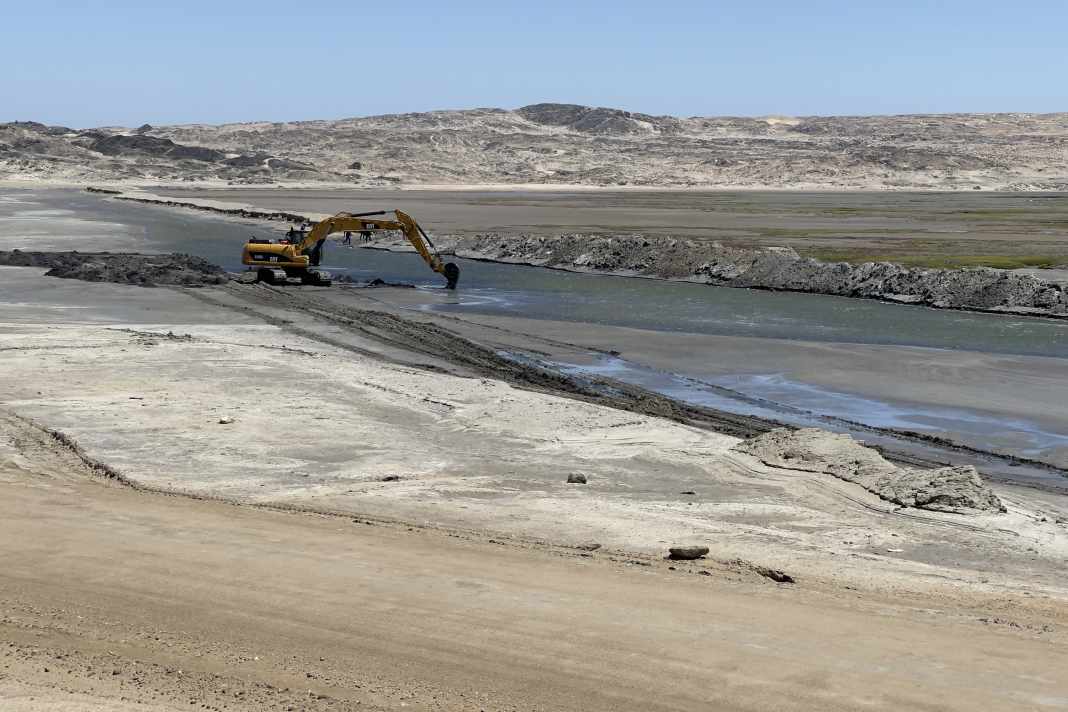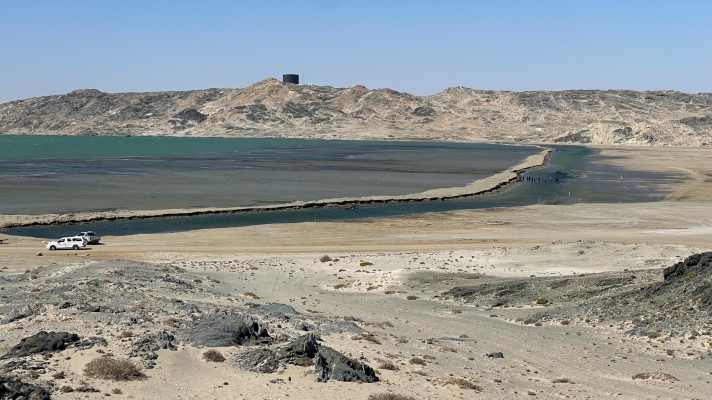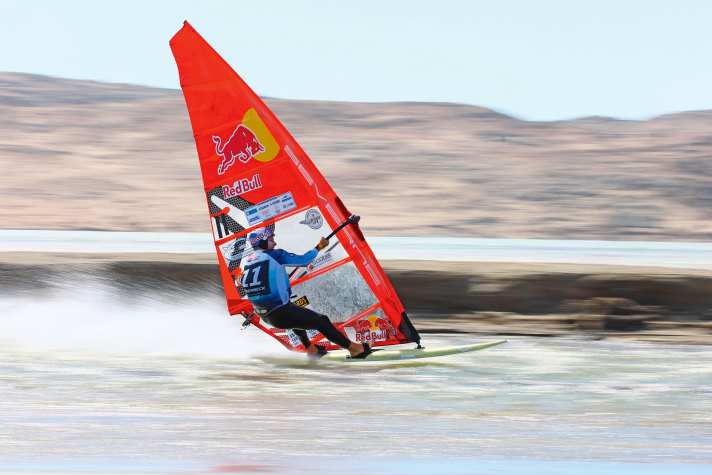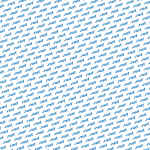Speed surfing: How the canal in Lüderitz is prepared for the Speed Challenge






The place for records is not an imposing stadium, but a bay in the Namibian desert - the backdrop for the Lüderitz Speed Challenge, where the world's fastest windsurfers come together every November in the hope of setting new personal, national or even world records. Lüderitz is currently the only spot in the world where new records are realistic. The legendary speed channel was dredged into the sand here and has been prepared anew every year for the challenge ever since. The spot was discovered when there were rumours of even more wind in Lüderitz during a speed world championship in Walvis Bay in the early 2000s. After a few record attempts on the open sea, the first channel was dredged and the records have been tumbling ever since. The narrow channel is optimally aligned with the prevailing wind direction so that you can ride downwind at full pressure from diagonally behind - a permanent slingshot, as speed surfers call the drop at full throttle. The narrow width means that wind waves are almost completely prevented and the water is almost as smooth as glass, even in gale force winds.
More about speed surfing:
- These are the speed records in windsurfing
- The best tips for speed windsurfing from Andy Laufer
- From building contractor to speed surfer: how Andrea "Principe" Baldini became the "Prince of Speed"
- Speed surfing: "The ultimate goal is 100 km/h" - Interview with Antoine Albeau
- Jenna Gibson on the Lüderitz Speed Challenge and her world record
- "Speed is like ski jumping" - Interview with Gunnar Asmussen
The preparation of the channel is mainly manual work
Preparations on the canal begin every year long before the opening of the Lüderitz Speed Challenge, which starts this year on 3 November. "From July to October, we are busy preparing the canal with 10 to 15 people," organiser Raffaello Gardelli tells us. The merciless wind, which blows at up to ten force winds all year round, carries lots of sand from the desert towards the coast and gradually silts up the canal. However, at the beginning of the preparations, the channel must first be drained so that the crew can get started. "We have a well-coordinated team of locals," says Raffaello, "who mainly do this with shovels and wheelbarrows. It's really hard work, it wouldn't be possible without these people!" Excavators are only used sporadically - the heavy equipment is too often bogged down in the silt. The excavated sand is filled into hemp sacks, which are then stacked at the edge. This keeps the windward edge clean and minimises chop.
The channel is not simply excavated, but modelled according to a specific pattern: To windward, it is as shallow as possible, around 30 to 40 centimetres deep. Towards the leeward side, the channel is then around one metre deep. "If you fall, you have a bit more water there," comments Lüderitz regular Björn Dunkerbeck dryly. This slightly deeper area also ensures that a certain reserve of water remains in the channel. Because on days with particularly strong winds, not only is sand constantly blown into the channel, but the water is also pushed out of the channel towards the back. This becomes a problem, especially in the start box, where the riders are not yet fully planing. "With 40 knots of wind, there is about 20 cm less water at the front, but 20 cm more at the very back," Raffaello describes.

The canal is fully booked and well prepared for 2025
The channel is filled by groundwater and the sea, which is only a few metres away. The higher the tide rises, the more water enters the channel naturally - full moon nights are ideal. "But it's not a full moon all month long. That's why additional water is pumped into the channel before the days with good winds," explains Dunkerbeck. "And that costs thousands of euros a day. Really big pumps with really high pressure are needed for this, millions of litres go in. That's an extremely big expense!" And the more budget is available, the better prepared the sewer is and the more it can be optimised during the week.
I have high hopes for this year! There will be many national records, and ideally the world record again!" (Björn Dunkerbeck)
The money comes mainly from the drivers. It costs 1250 euros per week to take part in the Lüderitz Speed Challenge - travel and accommodation are additional costs. There are also a few sponsors, such as the Lüderitz Nest Hotel, where many drivers stay. "This year, the canal is fully booked," says Dunki happily. There was therefore plenty of time and capacity for preparation, which will be particularly noticeable on days with good winds. "Good" in this case means around 40 knots - "you can't really do anything under 30 knots on the canal," says Raffaello. For Dunki, however, this bodes well: "I have high hopes for this year! There will be many national records, and ideally the world record again!"
However, the preparations were not entirely without obstacles: "Planning is almost impossible, something always comes up," says Raffaello. This year it rained for four weeks and flooded the canal - at a time when the canal was supposed to be dry for the most important work. Nevertheless, the Swiss-Swedish organiser raves about the landscape: "The country is home to extreme forces of nature and wonderful colours!"
What makes the canal in Lüderitz fast?
For Björn Dunkerbeck, one of the most important factors that make the channel fast is the starting area. "It's important that it's deep enough there so that you don't damage the fin on the bottom when you jump up," he describes. "If the fin is broken, then you have no confidence and can't really go full throttle." Only with an optimal start can you get close to 100 km/h at the beginning of the test track and then maintain this speed over the entire distance.
In contrast to the construction of the canal, the measurement technology is relatively easy to install. While the top speeds are measured using GPS, the record route is monitored using two synchronised special cameras that record 100 images per second. "There are fixed GPS points that we use for orientation, which we check together with a topographer," says Björn. There are several poles in front of the camera to ensure that it is orientated at exactly 90 degrees to the canal. The whole system was developed by German speed surfer Manfred Fuchs, who is also on site every year. "When I started, the measuring equipment weighed over 50 kilos," says Raffaello. "Manfred reduced the equipment to five kilos!"
How Björn Dunkerbeck prepares himself
And how is Björn himself preparing for the Lüderitz Speed Challenge? After all, he still has the big goal of breaking the 100 km/h over 500 metres - impressively described in his film "Born to Windsurf". "As soon as I'm down, I go surfing as much as possible - both at Diaz Point, the spot near the canal, and on the canal itself. I always hope that there's not so much wind at the beginning that you can surf yourself back in," says Dunki. He has packed some tried and tested speedboards with a width of just 40 centimetres and is also getting new boards, "in the hope that they will be a bit faster."
For the sails, Björn also packs the tried and tested models from the previous year, plus a set of new cloths. And when it comes to the booms - does the legend rely on normal models or does he use special asymmetric models? "It hasn't yet been proven that the asymmetric ones are faster," says Björn. "They need so many reinforcements that they are also a bit heavier. My fastest runs so far have always been with normal booms."

Top line-up for the Lüderitz Speed Challenge 2025
However, it's not just the channel, but also the surfing protagonists of the Lüderitz Speed Challenge 2025 that are raising hopes of new records. Antoine Albeau and Jenna Gibson are the current world record holders, both of whom set new records in the Namibian desert a year ago. In addition to "Terminator" Björn Dunkerbeck, Vincent Valkenaers is also a hot candidate for a new record. His sponsor Patrik has announced the "Project 100" and is certainly sending the Belgian and Heidi Ulrich to Lüderitz with top equipment. Ulrich recently set a new record on the open sea and will be keen to wrest the record back from Jenna Gibson. Gunnar Asmussen was also in the top group last year, this time he is not only an active participant but also a sponsor with his sailmaking company "Sailmakers Dedication". Also registered is Nils Bach, who recently set a new sea record, as well as Cedric Bordes and youngster Brendan Lorho.
The Lüderitz Speed Challenge kicks off on 3 November, with the contest period running until 30 November. The forecast promises good wind on Tuesday and Wednesday, and from the coming weekend it should be really choppy! All runs and times can be found at luderitz-speed.com/ranking-2025 follow. We will report regularly on surf-magazin.de!

